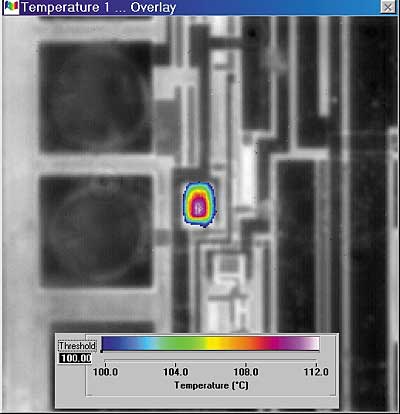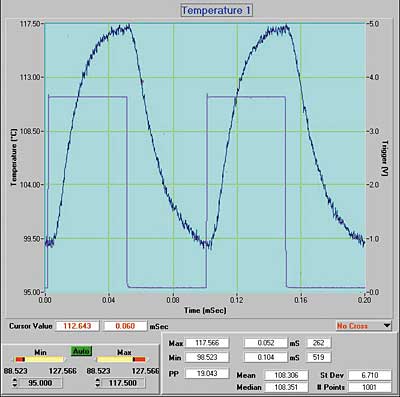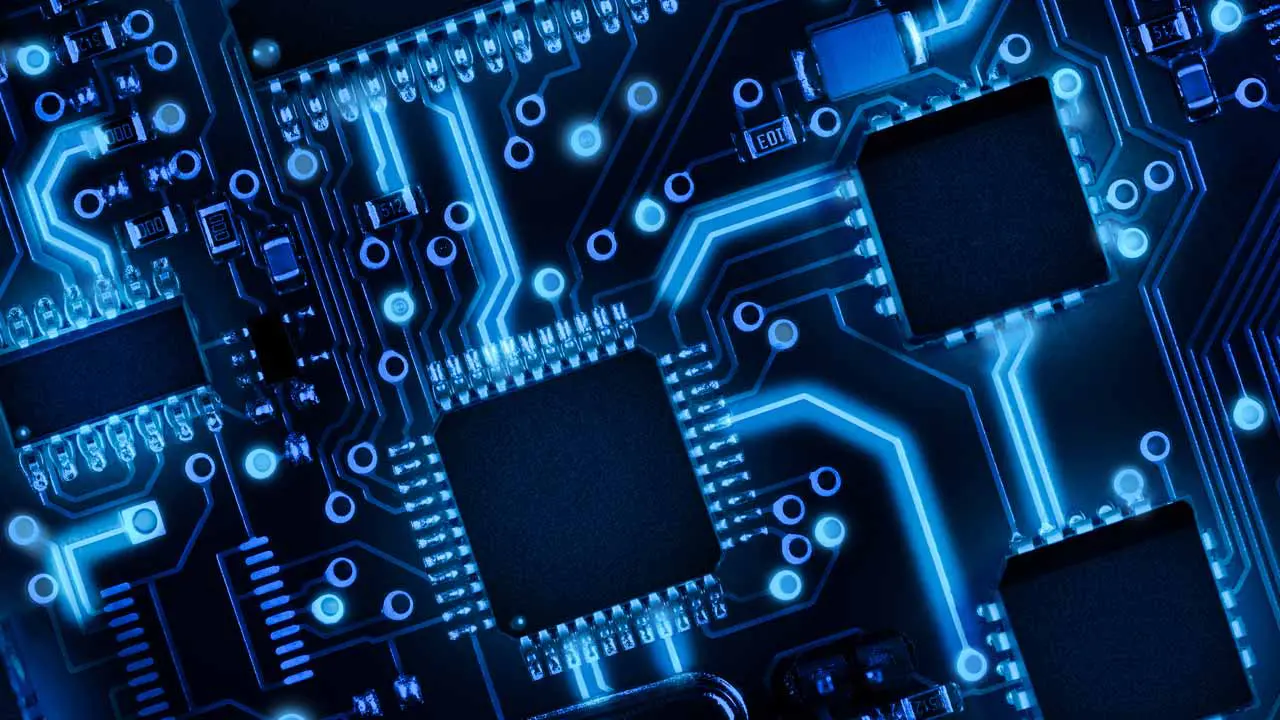Thermal imaging of microscopic targets has evolved over the past 20 years to the point where real time “true-temperature” mapping with 50 milliKelvin sensitivity and 2.75 �m spatial resolution is possible. Recently, the capability to study and evaluate high frequency transient pulses has been added.
Infrared imaging methods provide unequaled ease and flexibility for investigating junction temperatures in rf, microwave and other semiconductor devices. Infrared temperature measurements are accurate and fast, and offer the least disturbance to the point being measured. This article discusses some of the challenges facing infrared micro-thermal imaging along with the present status of the techniques.
Special Requirements for Semiconductor Targets
Target features are very small, and although temperature changes can be large, temperature resolution and spatial resolution must be optimized with not much radiant energy available. For the temperatures of interest for these semiconductor targets, most of the radiant energy is between 8 and 12 microns. However, in order to resolve small features, we must utilize only the photons with wavelengths shorter than 4 microns. In addition, the semiconductor surface consists of materials with widely varying emissivity. High reflectivity (low emissivity) areas have reduced infrared emission with thermal reflections from elsewhere in the environment that contaminate the thermal image.
Spatial Emissivity Correction
Radiant energy leaving a target surface consists of a combination of three components: the emitted component related to the surface temperature, the reflected component related to the surrounding environment, and the transmitted component related to energy from sources behind the component surface. For semiconductor targets, the transmitted component can generally be ignored. The reflected component is controlled by a combination of baffling and compensation algorithms. The emitted component, from which the true temperature needs to be derived, is closely related to the surface emissivity.
The emissivity of a surface depends on its material and texture, and can vary between zero (perfect reflector) and 1.0 (perfect emitter). The wide variation of emissivities on the surface of most semiconductors can result in misleading results when infrared thermography is used to characterize temperature distribution of a powered device.
True temperature thermograms can be produced by measuring the infrared energy leaving the surface, by isolating the emitted component of this energy, and by applying pixel-by-pixel corrections for emissivity variations on the target surface (Figure 1).
 |
Figure 1. An emissivity corrected (true temperature) thermogram of a GaAs device overlaid on a reference image.
Attaining Spot Sizes Below 3 mm
The theoretical limit for the spatial resolution of microscopes is given by the Sparrow Criteria [1]:
|
Where:d = minimum separation between the features to be resolved
= wavelength of detected radiant energyN.A. = numerical aperture of the microscope objective
Although the theoretical limit of N.A. is 1.0, for which d would then equal 1/2 the wavelength, working distance limitations make it more reasonable to use a value of 0.55. Limiting the detected energy to a waveband from 2 �m to 4 �m (3 �m center), we get a Sparrow Criteria spatial resolution of 2.75 �m. Figure 1 also demonstrates this spatial resolution. With a pixel resolution of 1.1 �m (3 times oversampling of the diffraction limit), we are able to achieve the diffraction limited resolution of 2.75 �m.
Movie Mode for Slow Transient Measurements
For long transients and pulse mode measurement for frequencies less than 2.5 Hz, a feature called “movie-mode” image capture and review is used. The “movie-mode” method is accomplished by acquiring successive frames of data at a rate up to the camera frame rate of 20 Hz. 100 frames of raw data are buffered and post-processed to “true-temperature” to be displayed and analyzed frame-by-frame, or the temperature of a selected region is plotted versus temperature.
As the thermal pulse rate approaches the camera frame rate, movie-mode analysis will not provide the peak temperature. For accurate capture of fast thermal waveforms, we require an acquisition system with a response time and sampling time that significantly exceed the thermal pulse rate.
High Speed Transient for up to 300 KHz Measurements
For high speed thermal pulse measurement, a single element InSb detector (aligned to the center of the 2-dimensional imaging InSb array) is used along with a wide bandwidth pre-amp and a digitizing oscilloscope. Employing the same algorithms for emissivity compensation and reflected component elimination, a plot of temperature versus time is obtained. Limited by the bandwidth or the pre-amp, this technique can resolve thermal pulses with a time constant of a few �sec (Figure 2).
 |
Figure 2. Temperature versus time response of a GaAs RF device operated in 50% duty cycle pulse mode (10 KHz pulse).
Summary
Infrared micro-thermal imaging is an excellent tool for thermal design verification, reliability, quality assurance, and process verification. Dramatic improvements in the hardware and software have made it fast and easy to obtain high resolution true temperature thermograms. The development of a high speed transient measurement capability allows measurement of peak temperatures of a semiconductor in a pulsed operation mode.
References
- McDonald, J., Albright, G., “Microthermal Imaging in the Infrared”, ElectronicsCooling, January 1997, pp. 26-29







